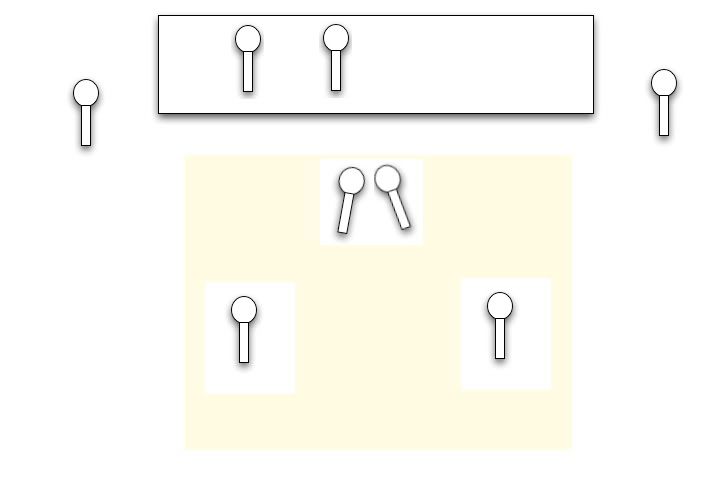AA3 Weeks 11 & 12 - Elder Hall & Orchestra Recording
For an orchestral recording I believe the following are important. There needs to be:
1) microphones capturing the overall orchestra
2) microphones down the hall near the audience to capture ambience
3) an announcer microphone
4) spot microphones to capture softer instruments
The announcer microphone is inside the booth in Elder Hall. Therefore I don't need to worry about setting that up.
If I remember correctly there are only 8 inputs available for recording at Elder Hall. Therefore it is important to choose your microphones wisely. I would start with the X-Y configuration already provided. The microphones provided by Elder Hall are Neumann KM183. These are small diaphragm, condenser and are omni directional. At approximately 2 meters of the ground they should pick up the transients quite well. These microphones are great for capturing a true sound, with a flat frequency response, accurate transients, and an uncolored sound.
But, since they have only a small diaphragm, I think I will need a separate set of microphones to pick up a more ambient wash of the sound. That is where I would place a pair of Neumann U87s on either side of the orchestra in an A-B setup. With these set to cardioid, I think I can capture a good stereo image.
Next I will place a pair of Neumann U87s halfway back from the stage into the audience in an A-B setup. This is to capture the ambience of the recording and also to include some of the audience applause. These would sit 3 meters off the ground. They need to be fairly high since the stage is raised about a meter. Normally I would say around 2 meters off the ground so I have taken the stage height into account. I think these microphones would be best set to omni directional since they are ambient microphones. Although I don't really want to capture what's happening behind so I'm not 100% sure at this stage.
For the last two inputs, I would use them for spotting instruments that need to be more prevalent in the mix. These would be quiet instruments like flute and violin. I would close mic each with a Shure Beta 57. These are super cardioid instrument microphones and could be good for isolating individual instruments.
When fed into the desk, I would have the inputs in the same order:
1-2 -> Neumann KM 183 (X-Y front)
3-4 -> Neumann U87s (A-B each side of orchestra)
5-6 -> Neumann U87s (A-B ambience/audience)
7-8 -> Shure Beta 57s (spot micing)
To be perfectly honest, I didn't really feel that Ray Thomas's approach to recording an orchestra was that useful. Recording to 16bit, 44.1kHz straightaway made me think he didn't know what he was doing. Classical music has more dynamic range than another style, so to limit yourself unnecessarily is unprofessional. Buy an external hard drive and do the job properly. He seemed very casual with his approach.

a rough outline of my set up. . .
[1] Christian Haines & Ray Thomas. "Audio Arts: Semester 1 - Weeks 11/12- Elder Hall & Orchestra Recording". Lecture presented at the Elder Hall, University of Adelaide, South Australia, 23rd May 2008
[2] Skeet, Mike. "Location Recording: Recording on Location Cheshire Youth Orchestra". 2002. Sound on Sound. 21/2 2007.
[3] Hulse, Richard. "Orchestral." Audio Technology.

No comments:
Post a Comment